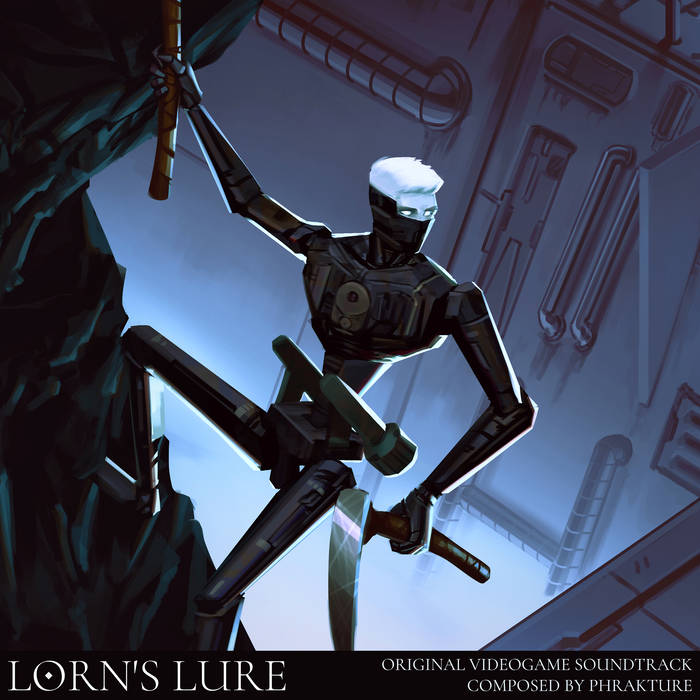Preface:
Rainbow 6 Siege is one of the most competitive and skill intensive shooters to date. It may be a hard transition to go from Call of duty, but it is definitely worth the investment. This article will focus on operators that will be the most beneficial to new players. Ideal operators for new players will be simplistic, widely playable, and able to conjure large amounts of experience points (XP). In this article, 3 attacking operators and 2 defending operators are selected to provide a variety in choice. The next article will switch and have 2 attacking, and 3 defending, for consistency. Only one operator from each division is being selected because the price goes up when unlocking a second operator from the same division. Also, because DLC operators costs more, only the original operators will be used.
Attackers:
Sledge:
Sledge is an awesome beginning operator for his simplicity, playability, and ability to gain a lot of experience points. As his name implies, a large sledge hammer is his most notable feature. This sledgehammer breaks through non-reinforced walls, making an easy opening, while still maintaining the element of surprise.
Simplicity:
Sledge is one of the more simplistic operators, and is very easy to use because of this. Beyond the basic controls, his sledge hammer offers no complexity beyond choosing where to swing it. Both of his primary weapons (L8582 & M59081) are completely balanced, offering both medium and close combat strategies.
Playability:
Sledge is one of the most playable operators due to his simplicity. His sledgehammer and LMG are very useful in secure area, opening new doorways and providing heavy fire support. In the bomb mode, he is even more efficient, since the defenders often struggle to completely fortify two rooms. With both of these game types, his frag grenades are especially effective, because a player can rapidly create a window and throw a grenade in. In hostage, he is able to stealthily open windows with little chance of actually hurting the hostage, whereas breach charges have a small chance to.
XP:
Although Sledge is able to give you only 5 XP for everytime you destroy a object with the hammer, they can easily add up. On maps like Skyscraper, when you have to traverse past a lot of windows to get to the other side, breaking all the windows will allow for additional XP. Despite Sledge not being optimal for obtaining XP, he can still bring it in quite nicely.
Weaknesses & Consensus
Overall, Sledge is a super simplistic and functional character. His only disadvantage is getting close to apply his hammer, since he can be easily shot. However, at the same time, other operators that would normally counter breach charges like Mute become ineffective.
ASH:
Ash, like Sledge is very simplistic. Unlike Sledge however, Ash’s specialist ability is a launcher that acts as a breach charge. So, she can open doorways without having to get very close. Both of her primary weapons are similar to each other (G36C & R4C), so there isn’t much weapon variety. However, both weapons are very accurate, and pair perfectly with her breaching rounds, offering a strong, surprise offensive.
Simplicity:
Ash’s simplicity is very comparable to Sledge, since both focus on breach aggressively. However, Ash is a little more complex, because her breaching rounds have multiple purposes. Not only can they open up non reinforced walls, but they can also destroy equipment, and even counter other operators like Mira or Mute. So, even though her gameplay resembles Sledge’s, Ash’s character is a little more complex.
Playability:
Ash is a very playable character, who is effective in all modes. In secure area, she can breach from a distance, and provide accurate fire into the area. Even if a room is completely fortified, her breach charges can still be effective by destroying the equipment in the room, or even damaging other operators. In the bomb mode, fortifications are spread thin, so she is able to create multiple large openings without endangering her safety directly. In the hostage mode, Ash can destroy fortifications that are normally heavily guarded without the risk of being shot placing a breach charge.
XP:
Ash is not an operator that I’d recommend for grinding XP. She only has two breach charges, and while both give a small amount of XP, it’s no guarantee that you’ll even need to use them. Ash’s primary weapons are very accurate and customizable, so the greatest XP gain you will receive is from stacking a large kill count.
Weakness & Consensus:
Despite Ash being able to counter a lot of defenders, she can also be countered. Bandit will destroy her breaching rounds on contact, and Jager can destroy her breaching rounds in mid-flight. However, Ash’s speed and accuracy pair well with her simplistic style, creating a powerful beginning operator.
BLITZ:
Blitz is an great operator to unlock early on, because he is very playable and combat focused. He carries a riot shield that has flash charges on the front of it, and a P12 pistol. Unlocking him early allows for new players to understand typical tactics that riot shield operators use, and how their momentum can change the game.
Simplicity:
Because Blitz is very combat intensive, his simplicity is perfect. His riot shield provides mobile cover, while his flash strip blinds enemies. Compared to other shield operators, he is able to run with his shield still facing forward, making Blitz even easier to use. Despite the ease of the shield with Blitz, the only thing that becomes complicated is choosing when to use your secondary, since doing so reduces cover.
Playability:
Blitz is one of the most playable operators, since he is so combat intensive. In all game modes, he can aggressively engage enemies. His riot shield allows for him to rush with little fear of taking oncoming damage. Within the secure area mode, Blitz can rush in and eliminate operators, and his shield acts as a fortification to secure the room. In bomb, he can take down operators more effectively since his flash is more effective in close quarters (usually rooms where the bombs are). In hostage, his aggressive gameplay will pressure defenders, without the use of explosives. Blitz also has a breath in play style. Players can use Blitz aggressively, or conservatively. Blitz can easily go solo, or have great synergy with a team, depending of the player. While his primary and secondary weapons don’t offer much wiggle room, his gadgets greatly affect his gameplay, the smoke grenades for more stealthy gameplay, and breaching charges for more aggressive players.
XP:
While Blitz is incredibly playable, he is not super awesome for XP gain. While you can obtain XP from flashing players, it is no guarantee that you will use the flash at all per round. However, because Blitz is very combat oriented, kills and pushing objectives should offer a lot of XP.
Weaknesses & consensus:
While it may seem that Blitz is a complete powerhouse, he does have some weaknesses. His flash is directional, so if a player turns away from the shield, the flash won’t affect them (but, turning your back in combat is not exactly ideal). Also, trap operators like Lesion or Ela make it so that Blitz can not run when affected by their traps, which deter his aggression. The biggest weakness in Blitz is knowing when to lower your shield to take a shot. In order to not let the enemy recover from a flash, aiming down and lowering your shield is necessary. So, knowing when to lower your defenses is crucial, but necessary. Blitz is an incredibly playable, and powerful operator, offering a lot of types of playing styles.
Defenders:
Rook:
Rook is probably the most simplistic operator. In addition to his powerful shotgun, his specialist ability make him a real threat. Rook places down a bag of ballistic vests, offering additional protection in combat. These vests offer a 20% damage reduction, granting operators to be downed, rather than just dying.
Simplicity:
Rook is super simplistic. Besides basic combat, the only thing that really defines him is placing down his bag of ballistics. Placing the bag down at the beginning of the round lets other players get them before they wander and fortify.
Playability:
In addition to offering extra protection to other operators, Rook is great because he is very powerful. His SG-CQB very accurate, and potent, often yielding no more than one shot necessary. His other submachine guns are also very powerful. In secure area, the additional protection is very helpful, since it usually comes down to a TDM. Within the bomb mode, since not all of the walls are usually fortified, the extra heath acts as another fortification. The vests are even more powerful in the hostage game mode because explosive attackers are not usually used. Players who like to wander can use rook, but playing more conservative works well too.
XP:
Rook is probably one of the best operators for XP gain. Since he receives XP everytime someone grabs a vest, you will often receive a large some of XP just from the vests (Who wouldn’t want one, right?). Placing the bag later in the game might not grant you a lot ofl XP gain, since players might run off, or begin fortifying. But, after getting the XP from the vests, the only way to gain XP is by fortifying and getting kills (which the vests help out with).
Weakness & Concessus:
Although the vests sound overpowered, they only offer some protection. Headshots, melee, and Twitch drone attacks still do normal damage, even if the vest is applied. The vest bag is destructable, but will take a few hits. Overall, Rook is an excellent operator for gaining a lot of XP early on, and is both powerful and playable.
Kapkan:
Kapkan is a very easy operator to play, offering a wide range of tactical advantages. His ability allows for players to place 5 entry denial devices (EDD), each dealing up to 60 damage. Cautious players take additional time to destroy them, risky players take heavy damage to run past them. Although not super powerful, using Kaplan’s ability allows for a great introduction into using defender’s deployables correctly.
Simplicity:
Kapkan’s weapons are very simplistic, a basic SMG and semi-automatic shotgun. However, the usage of his EDDs do complicate things a little bit. A number of strategies can be utilized because the EDDs can be placed on both door and window frames. On door frames, Kapkan can place his EDDs in three spots: high, medium, and low. High is head level, medium is torso, and low is shin level. While each has its own benefit, they also have disadvantages. Placing it high has a low chance of being seen, but also has a low chance of going off (since attackers like to crouch). Each level of placement changes its visibility to it’s likeliness of going off. Windows only offer one place of placement, and will always go off if not destroyed. Barricaded doors can allow for a trip wire to go off if a punch goes through the wire. Another area of complexity appears when players know they are engaging a Kapkan. Often, they play very wearily, and are more conservative when breaching, hoping to destroy a trap before falling into one. Overall, Kapkan is really simplistic, but his trap deployment and player reaction can allow for some complexity.
Playability:
Kapkan is very playable, since his traps offer only advantage to the defenders. By placing them in secure area, his traps can disorient and weaken the enemy before they even reach the room. Even better, his traps can kill players who have to rush into the room. In bomb, his 5 traps are often more than enough to cover all entrances to both rooms. In hostage, his EDDs often make it difficult for a quick entrance to the hostage, and make an even more difficult exit, if the traps are not defused. Trap placement is important to Kapkan’s playability, but Kapkan’s weapons are also super powerful, offering potency where his traps can fail. Kapkan Players can use Kapkan both conservatively and aggressively. By placing traps in not just the defending room, but rather other hotspots such as hallways and common entry ways that are farther away can lead to easy kills and making the enemy team uneasy.
XP:
Placing traps and dealing damage with them gives you XP (although placing traps doesn’t give you as much as dealing damage), so both can add up. Also, by dealing damage to a person with a trap and having a teammate finish them off still gives you an assist bonus. Although, since players are often aware of the traps after discovering you, gaining XP from traps dealing damage isn’t super easy since they are easy to diffuse. However, getting the assists is a very fast way to gain a large amount of XP.
Weakness & Consensus:
While Kapkan can place 5 traps, their lack of lethality can be a weakness. Also, since his wire is a little more visible than other trap operators, seasoned attackers can easily destroy Kapkan traps with one bullet. So, anti-electronic operators like Thatcher and IQ are able to destroy the traps easily. Also, the Twitch done can destroy the traps with ease. However, Kapkan is still an easy operator to play, offering a huge effect on gameplay for the attackers, affecting them both physically and psychologically.














